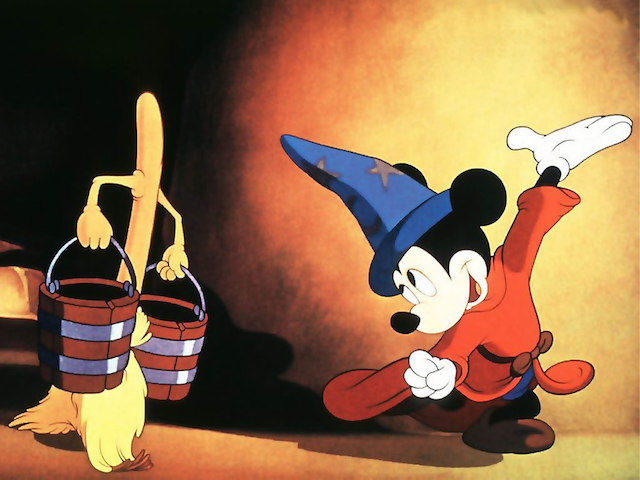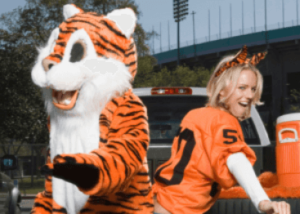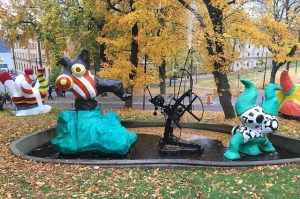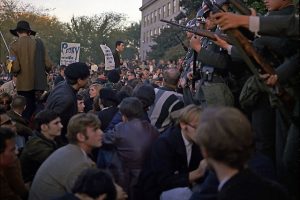10 Wild Storylines Left Out of Popular Books and Movies
Have you ever heard the story about how a different actor was almost cast in an iconic role? Like how Will Smith nearly played Neo in The Matrix, or how Eric Stoltz was originally cast as Marty McFly in Back to the Future? These “what could have been” casting stories are classic Hollywood trivia—and there are hundreds of them.
But while alternate casting gets a lot of attention, one thing that’s even less well known is the subplots we never got to see. Whether it was for time, tone, pacing, or studio politics, entire storylines have been written, filmed, and then cut—sometimes taking big chunks of character development or wild plot twists with them.
Here are 10 of the most incredible subplots that were left out of famous stories—the parts you didn’t see, but might change how you look at the stories forever.
10. Tommy Wiseau’s The Room Had a Vampire Subplot Removed
The Room, directed by Tommy Wiseau, is a movie that defies explanation. It’s so notorious for its bizarre dialogue, wooden performances, and nonsensical plot that it’s become a cult classic—famous for being so bad it’s good. In fact, it’s earned the title of “best worst movie” of all time, and there’s even a film about the making of it (The Disaster Artist) to try and explain just how it came together—or, in this case, how it fell apart.
What makes The Room even more fascinating is that we could have gotten a lot more of Tommy Wiseau’s unique vision. Co-star Greg Sestero revealed that the original script for the film actually featured a vampire subplot. Yes, you read that right: Tommy Wiseau’s character was supposed to be a vampire.
While it’s hard to imagine a vampire element in a movie that barely makes sense on its own, Wiseau’s original plan included a scene where his character would fly away in a car—because, naturally, vampires have flying cars. This absurd twist was ultimately scrapped, but just imagine how much more bizarre The Room could have been with an undead subplot thrown into the mix. It’s truly a missed opportunity.
9. A Trans Character’s Storyline Was Cut from Paper Mario

The Paper Mario series is known for its quirky charm, creative gameplay, and unique blend of RPG and puzzle elements. Since its debut on the Nintendo 64 in 2000, the series has carved out a beloved niche in the Mario universe. But beyond the turn-based battles and papercraft world lies a fascinating—and largely unknown—storyline that was removed for Western audiences.
In the Japanese version of Paper Mario: The Thousand-Year Door, players meet a character named Vivian, a ghostly figure who initially appears as an enemy but later joins Mario’s team. Vivian is part of a trio of sisters, but she’s constantly bullied and demeaned by her siblings. The Japanese script reveals a deeper reason for this treatment: Vivian is a transgender character.
At one point, the game describes Vivian as someone who “appears to be a girl but is really a boy,” and during an emotional scene, one of her sisters mocks her by calling her a man. Vivian responds with strength and pride, affirming that she is a woman now and happy with who she is. For a 2004 children’s game, this was a remarkably progressive and respectful portrayal of a trans character.
However, all of this was scrubbed from the English-language release. The localization team removed any references to Vivian’s gender identity, reducing the character’s background to just another quirky companion. The story still works—but a meaningful subplot about identity, self-acceptance, and resilience was left behind.
8. The Bizarre Subplot About Sonny Corleone That Was Left Out of The Godfather
The Godfather is widely regarded as one of the greatest films ever made, but what many people don’t realize is that the movie is based on a book – and the book had some… interesting details that didn’t make it to the big screen. One of the strangest omissions? A subplot about Sonny Corleone’s, uh, physical attributes – or more specifically, his genitals.
Yes, you read that right. In Mario Puzo’s original novel, there’s a rather odd and persistent focus on Sonny Corleone’s so-called “manly stature.” It seems that the author had a peculiar fascination with this aspect of the character, and it even extended to the women in the story. For example, Lucy Mancini, one of the characters, is described as missing Sonny because of his “manly stature.” But it doesn’t stop there – Puzo didn’t just mention it once or twice. No, this detail is brought up repeatedly throughout the book, almost as if it’s a central theme.
The subplot essentially revolves around how Sonny’s physical attributes are perceived by the women around him, with Lucy being the most vocal about it. It’s written in a way that feels both awkward and oddly fixated, making it hard to ignore. However, when the book was adapted into the iconic film, this bizarre subplot was understandably left on the cutting room floor. After all, The Godfather is a story about family, power, and loyalty – not a character’s, ahem, “stature.”
It’s fascinating to see how Puzo’s writing veered into such strange territory, but it’s also a reminder of how much editing and adaptation go into crafting a story that resonates with audiences. While the movie is a masterpiece, the book’s odd fixation on Sonny’s physicality is a bizarre footnote in the history of one of cinema’s most beloved films.
7. Planes, Trains, and Automobiles Had a Cheating Subplot
Planes, Trains, and Automobiles is a beloved holiday classic, often hailed as one of the greatest Thanksgiving movies of all time. With Steve Martin and John Candy delivering some of their most iconic performances, the film strikes a perfect balance between laugh-out-loud comedy and heartfelt emotion. But there’s one moment near the end that has always felt just a little… odd.
When Steve Martin’s character finally makes it home, his wife greets him with teary eyes and a strange mix of relief and confusion. It’s a powerful moment, but the emotions seem a bit disproportionate—unless you know what was originally planned.
In a longer cut of the film and early drafts of the script, there was a subplot that explained her reaction. She believed her husband might be cheating on her. Because Del (John Candy’s character) was just a name over the phone, she assumed Del might be a woman. Her unease built as he failed to return home day after day, fueling suspicion that he wasn’t just stranded with a travel companion—he might be having an affair.
That whole storyline was cut for pacing and tone, leaving only her emotional reaction behind. While the movie works just fine without it, knowing the original intention gives that final reunion scene a whole new layer of meaning.
6. James Gunn’s Scooby-Doo Had a Lesbian Subplot (That Didn’t Make the Cut)
Scooby-Doo has been a beloved part of children’s entertainment since its debut in 1969, and over the years, it’s been the subject of plenty of jokes and speculation. From funny theories about what’s really in those Scooby Snacks to fan debates about potential romantic relationships between the characters, the Mystery Inc. gang has kept fans guessing. One of the most talked-about subplots? The idea that Velma Dinkley might be a lesbian.
For years, fans speculated about Velma’s sexuality, with many pointing to her close friendship with Daphne as a possible hint. Was it intentional? In the earlier iterations of the franchise, it was hard to say. But in the more modern era, Velma’s character has been explicitly written as a lesbian, starting with Michelle Pfeiffer’s portrayal in the live-action movies. However, it turns out that the groundwork for this storyline might have been laid much earlier – by none other than James Gunn.
In 2002, Gunn wrote and directed a live-action Scooby-Doo movie, and according to him, he included a lesbian subplot for Velma. Yes, you read that right. Gunn’s original script featured a romantic storyline for Velma, but here’s where things get tricky. The studio reportedly watered down the subplot, and it was eventually edited out of the final film. To make matters even more complicated, Velma was given a boyfriend in the sequel, Scooby-Doo 2: Monsters Unleashed, which seemingly sidelined the idea altogether.
Gunn later spoke about the decision, expressing his frustration with how the studio handled the character. While the 2002 movie didn’t go in the direction fans might have hoped, it’s interesting to think about how Gunn’s original vision could have changed the trajectory of Velma’s character. It wasn’t until much later, in shows like What’s New, Scooby-Doo? and Velma, that Velma’s sexuality was explicitly addressed, making her one of the most prominent LGBTQ+ characters in mainstream animation.
5. House of 1000 Corpses Was Supposed to Have a Skunk Ape Subplot
Rob Zombie’s House of 1000 Corpses is a cult horror film that drips with grindhouse vibes, grotesque imagery, and chaotic energy. As Zombie’s directorial debut, it set the tone for his signature blend of gritty violence and psychedelic nightmare fuel. Among its many strange and twisted moments is a blink-and-you’ll-miss-it shot of something truly bizarre: a skunk ape.
For those unfamiliar, the skunk ape is a southern cryptid—basically Florida’s answer to Bigfoot, but smellier and more feral. In the film, it appears momentarily during a surreal dream sequence, never to be mentioned again. But it wasn’t always meant to be just a weird visual cameo.
In the director’s commentary, Rob Zombie briefly mentions that the original script featured a full skunk ape subplot. The creature was actually supposed to appear in the flesh (or fur) and wreak havoc in one of the film’s chaotic scenes. It would have been a bloody, bizarre twist even by House of 1000 Corpses standards.
Unfortunately—or perhaps fortunately, depending on how you feel about murderous cryptids—the skunk ape subplot was ultimately scrapped. All that remains is that haunting glimpse in the dream sequence, a hint at the even weirder version of the film we never got to see.
4. The Lost Epilogue of The Shining: What Really Happened to Danny and Wendy?
Stanley Kubrick’s The Shining is one of the most iconic horror films of all time, but the story behind its creation is just as chilling as the movie itself. From Shelley Duvall’s grueling filming experience to Kubrick’s perfectionist tendencies, the production of The Shining is legendary. However, there’s one lesser-known chapter in the film’s history that often gets overlooked – Kubrick actually filmed an epilogue to the movie.
In the original version of The Shining, the film didn’t end with Jack Nicholson’s maniacal laughter echoing through the snow-covered Overlook Hotel. Instead, Kubrick included a scene that provided a more definitive conclusion for Danny and Wendy Torrance. In this epilogue, we learn that Danny and his mother are physically okay after their harrowing ordeal. The two are shown recovering in a hospital, dealing with the trauma they endured at the hands of Jack and the supernatural forces of the Overlook. It was a quiet, somber ending – no spooky visions, no lingering dread, just a sense of relief that the characters were alive and on the road to recovery.
Kubrick’s intention with this epilogue was reportedly to give audiences some closure. He had a “soft spot” for the characters and wanted to reassure viewers that Danny and Wendy would be okay, even after everything they went through. The scene was included in the first cut of the film and even made it into the original screenplay, which is why we know about it today.
But here’s where things take a strange turn. Kubrick, known for his obsessive attention to detail and willingness to revise his work, eventually changed his mind about the epilogue. He decided that the film’s ambiguous ending was more impactful and left audiences with a lingering sense of unease – which, of course, is exactly what horror fans wanted. However, removing the scene wasn’t as simple as hitting “delete.” Since the film had already been distributed in some theaters, Kubrick had to physically cut the scene out of every print. Reports suggest that copies of the epilogue were destroyed, and the footage was reportedly lost forever.
To this day, fans speculate about what could have been. Some wonder if Kubrick’s change of heart was purely artistic, while others think he may have been influenced by test screenings or studio pressure. Regardless, the lost epilogue adds another layer of intrigue to the already fascinating history of The Shining.
3. The Movie Fantasia Cut an Evolution Sequence

Disney’s Fantasia is a landmark in animation history—a bold 1940 experiment that fused classical music with stunning visuals in a way audiences had never seen before. One of its most memorable segments, set to Igor Stravinsky’s “The Rite of Spring,” depicts the dramatic rise and fall of dinosaurs, starting with the formation of Earth and moving through the early stages of evolution. But what many fans don’t know is that this sequence was originally supposed to go much further.
Walt Disney and his animators had envisioned an entire evolutionary arc that didn’t stop with the extinction of the dinosaurs. The original plan included the rise of mammals, the eventual emergence of humans, the discovery of fire, and scenes representing early human civilization. It would have been an epic, Darwinian journey through time—one of the boldest things ever attempted in animation.
But the idea of showing human evolution in a family film during the 1940s was controversial, to say the least. The topic was a lightning rod for fundamentalist religious groups, many of whom strongly opposed the theory of evolution. According to animator John Hubley, Walt Disney faced direct threats from powerful groups who didn’t want the film to depict humans as part of an evolutionary chain.
With concerns mounting about public backlash and the film’s already risky experimental nature, Disney made the decision to cut the segment. What remained was still groundbreaking, but it stopped short of what could have been one of the most ambitious sequences in animation history.
2. Zootopia Originally Forced Predators to Wear Shock Collars
Disney’s Zootopia became a beloved animated hit thanks to its clever world-building, relatable characters, and timely themes about prejudice and inclusion. But early in development, the film had a much darker tone—so dark, in fact, that the entire story was reworked from the ground up.
In the original version of Zootopia, predators were seen as inherently dangerous and were forced by law to wear “taming collars”—shock devices that would zap them whenever they expressed strong emotions like anger or excitement. This included main character Nick Wilde, who was originally the protagonist before Judy Hopps took center stage in the final version.
One chilling scene that was storyboarded but never animated in full featured a young bear being fitted with a taming collar during a disturbing “taming party.” The emotional trauma was on full display, showing just how deeply ingrained the fear of predators was in this version of Zootopia’s society.
Test audiences and creators alike found this version of the story too bleak and unsettling, and the message about systemic oppression hit a little too hard for a family film. Disney decided to lighten the tone, shift the focus to Judy, and remove the shock collar concept entirely—though concept art and storyboards still exist online as haunting reminders of what Zootopia almost became.
1. The Dark Side of Kangaroo Jack: It Was Originally an R-Rated Movie
Kangaroo Jack might not be the most celebrated film in cinematic history, but it does have its place – albeit a lowly one – with an 8% critics’ score on Rotten Tomatoes. The 2003 buddy comedy, starring Jerry O’Connell and Anthony Anderson, follows two friends who accidentally let a kangaroo (wearing a jacket, no less) escape with mob money. It’s a wild premise, but not exactly the kind of movie you’d expect to have a dark, R-rated origin story.
Here’s the kicker: Kangaroo Jack was originally filmed as an R-rated movie. Yes, you read that right. According to star Jerry O’Connell, the film was initially intended to be a gritty, crime-comedy in the vein of Midnight Run, complete with low-level mobsters, dark humor, and – you guessed it – full-frontal nudity. The kangaroo was supposed to be a quirky sidekick in a story about two bumbling criminals trying to recover stolen money.
But here’s where things took a bizarre turn. The film’s promotional material leaned heavily into the image of a kangaroo in a jacket, which led test audiences to believe they were about to watch a family-friendly comedy – you know, something lighthearted and fun for the whole family. Needless to say, when audiences actually sat down to watch the movie, they were massively underwhelmed. Critics panned it for its lack of coherence, poor humor, and tonal confusion, and the film became a box office disappointment.
Rather than rebrand the movie with a more accurate marketing campaign, the studio decided to recut the film to make it more family-friendly. They stripped away much of the R-rated content, hoping to appeal to a broader audience. Unfortunately, this backfired spectacularly. The recut version still failed to win over critics or audiences, and the film’s reputation as a misfire was cemented.
It’s fascinating to imagine what Kangaroo Jack could have been if it had stayed true to its original vision. Would it have been a cult classic like Midnight Run, or would it have been a forgettable mob comedy either way? We’ll never know for sure. What we do know is that the kangaroo – and its jacket – will forever be a symbol of a movie that got lost somewhere between its R-rated origins and its ill-fated attempt to be family-friendly.

























